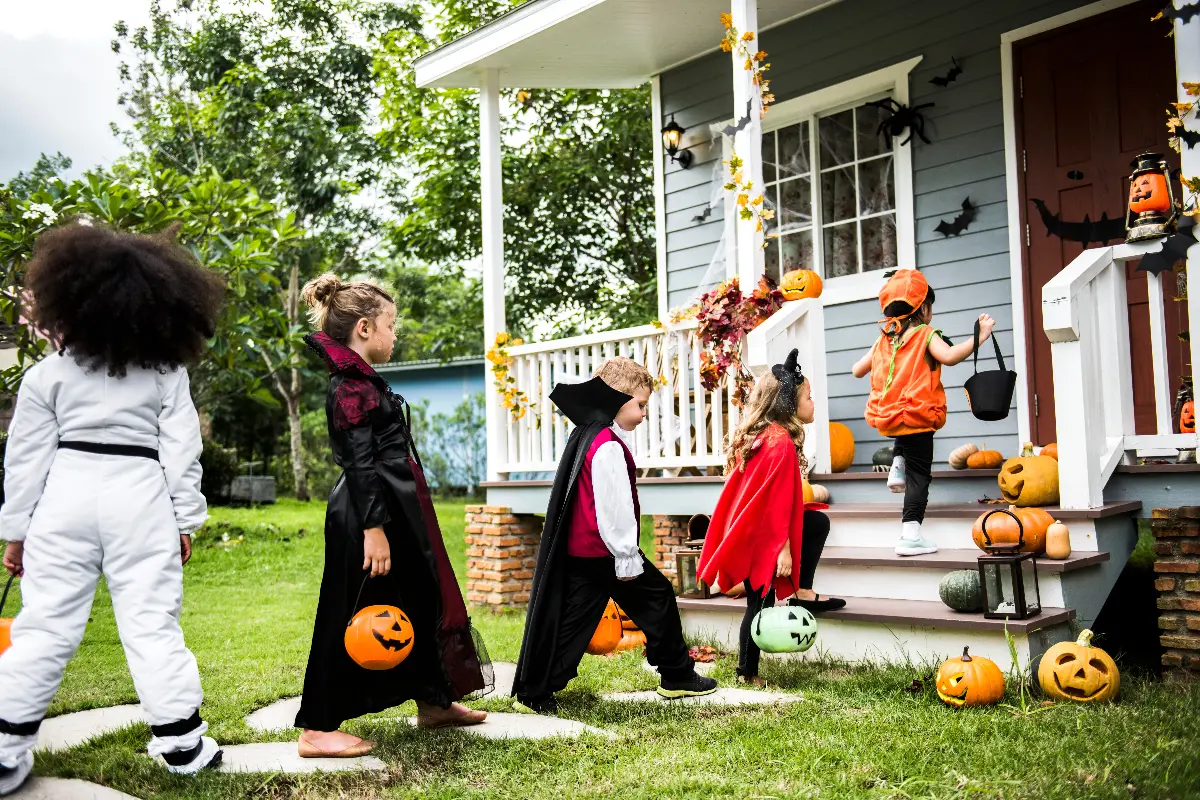As twilight descends upon the towns and villages come the close of October, a peculiar transformation occurs. Streets throng with ghouls, witches, and an array of fantastical beings, each knocking on doors with the age-old refrain: "Trick or Treat?" This Halloween custom, a staple of the season, marries merriment with a touch of the macabre, but how did it come to be such an ingrained tradition?

To unearth the origins of trick-or-treating, we must venture back in time to ancient Celtic festivals, particularly Samhain, which marked the end of the harvest season and the onset of winter. It was believed that during Samhain, the veil between the living world and the dead was at its thinnest, allowing spirits to pass through. The Celts would light bonfires and wear costumes to ward off these roaming ghosts.
Fast forward to the Middle Ages, and we find the tradition of 'souling’ – a precursory practice to modern trick-or-treating. On All Souls' Day, the poor would go door-to-door, offering prayers for the dead in exchange for 'soul cakes,' simple pastries which were believed to represent a soul being freed from purgatory. This act of going from house to house, which was known as "going a-souling," was common practice in England and Ireland.
As Christianity spread, it incorporated many of these early pagan practices, and All Hallows' Eve – the night before All Saints' Day – became a time for keeping the old traditions alive under a new guise. Children and sometimes poor adults would dress up in costumes and go around asking for food or money, a practice that came to be known as 'guising' (from 'disguising').
The term "trick or treat" is a distinctly American evolution of the tradition, and its first recorded usage was in Alberta, Canada, in 1927. The phrase issued a playful warning to homeowners - provide a treat, or risk a trick being played on you. By the 1930s and 1940s, trick-or-treating became a widespread practice in the United States, as a means to curb the mischief and vandalism that had come to be associated with Halloween by providing a structured opportunity for fun.
Interestingly, the practice waned during World War II when sugar rationing made candy a scarce commodity, but it surged back in popularity post-war as communities sought to foster a sense of American unity and consumer culture began to blossom.
Fast forward to the present day, and trick-or-treating has evolved to become a family-friendly activity, keenly anticipated by children (and many adults) each year. The custom has again shifted shape, merging with the British practice of 'guising,’ and it's not uncommon to see parties of youngsters accompanied by adults, both parties often donning costumes as elaborate as one another.
Some fun facts to chew on as you ponder this peculiar tradition:
- The largest pumpkin ever recorded weighed in at a staggering 2,624.6 pounds, grown by Mathias Willemijns in Belgium in 2016. It gives a whole new meaning to the term 'giant pumpkin’!
- According to the National Retail Federation in the US, consumers spent approximately $9 billion on Halloween in 2018, with $2.6 billion on candy alone – a sweet sum by any standard.
- Chocolate holds first place as the favorite Halloween candy in America, with Skittles, Reese's Cups, M&M's, and Starbursts rounding out the top five.
Though the modern-day rendition of trick-or-treating is a far cry from its historical roots, it continues to captivate and delight. Whether viewed as a means of community engagement, a way to indulge in sweet confections, or an opportunity for dress-up escapades, this Halloween custom showcases our enduring fascination with the thin line between the otherworldly and the mundane.
So, as you don your cape or sharpen your vampire fangs, remember the centuries of history that have shaped this curious convention. It lays bare our collective desire for connection — not only to each other as neighbors or as participants in a shared cultural experience but also to those long-gone societies whose echoes we entertain each year on a night filled with spooks, sweets, and the laughter of trick-or-treaters.
